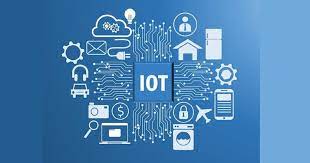Data analytics and processing play a crucial role in extracting meaningful insights from the vast amounts of data generated by IoT devices. By analyzing and interpreting this data, businesses and organizations can make informed decisions, optimize operations, and improve efficiency. Here’s an introduction to data analytics and processing in IoT:
- Data Collection: IoT devices and sensors continuously generate data through various measurements and observations. This data can include sensor readings, environmental parameters, user interactions, and more. Data collection involves capturing and storing this raw data in a centralized location or distributed systems for further analysis.
- Data Preprocessing: Raw data collected from IoT devices often contains noise, outliers, missing values, or inconsistencies. Data preprocessing techniques are applied to clean and prepare the data for analysis. This may involve data filtering, data imputation, removing duplicates, and normalizing or scaling the data to ensure consistency and accuracy.
- Data Storage and Management: IoT generates large volumes of data, often in a time-series format. Data storage solutions, such as databases or data lakes, are used to store and manage this data efficiently. Time-series databases are commonly employed due to their ability to handle large-scale, time-stamped data and provide fast querying capabilities.
- Real-time Processing: IoT applications often require real-time or near real-time processing to enable timely decision-making. Stream processing frameworks, such as Apache Kafka or Apache Flink, are used to process and analyze data as it arrives, allowing for immediate actions or alerts based on predefined rules or patterns.
- Batch Processing: In addition to real-time processing, batch processing is applied to analyze historical data collected over a specific timeframe. Batch processing frameworks like Apache Hadoop or Apache Spark are used to process large volumes of data in parallel, enabling complex analytics, machine learning, and predictive modeling.
- Real-time Analytics: In some cases, real-time analytics is crucial for real-time decision-making and response. It involves analyzing data as it is generated, allowing for immediate insights and actions. Real-time analytics can involve complex event processing (CEP) techniques, streaming analytics, or machine learning algorithms deployed at the edge or in cloud systems.
- Data Analytics Techniques: Various data analytics techniques are applied to extract insights from IoT data. These techniques include descriptive analytics (summarizing and visualizing data patterns), diagnostic analytics (identifying the causes of specific events or anomalies), predictive analytics (forecasting future events or trends), and prescriptive analytics (providing recommendations or actions based on data analysis).
- Machine Learning and AI: Machine learning algorithms and artificial intelligence techniques are increasingly used in IoT data analytics. These algorithms can discover hidden patterns, detect anomalies, classify data, and make predictions based on historical or real-time data. Machine learning models can be trained to optimize IoT system performance, predict failures, or enable autonomous decision-making.
- Data Visualization: Data visualization techniques are employed to present IoT data in a visually appealing and understandable manner. Visualization tools and dashboards help stakeholders gain insights quickly, monitor key performance indicators, and track the status of IoT systems in real-time.
- Data Security and Privacy: IoT data processing must address security and privacy concerns. Data encryption, access control mechanisms, and anonymization techniques are implemented to protect sensitive information and ensure compliance with regulations.
- Maintenance and Optimization: Continuous monitoring, maintenance, and optimization of the data analytics system are necessary to ensure accuracy and effectiveness. This may involve updating algorithms, retraining machine learning models, or incorporating feedback from domain
By leveraging data analytics and processing techniques in IoT, organizations can unlock the full potential of their IoT deployments. These techniques enable them to gain actionable insights, optimize processes, improve customer experiences, and drive innovation across various industries.
SHARE
